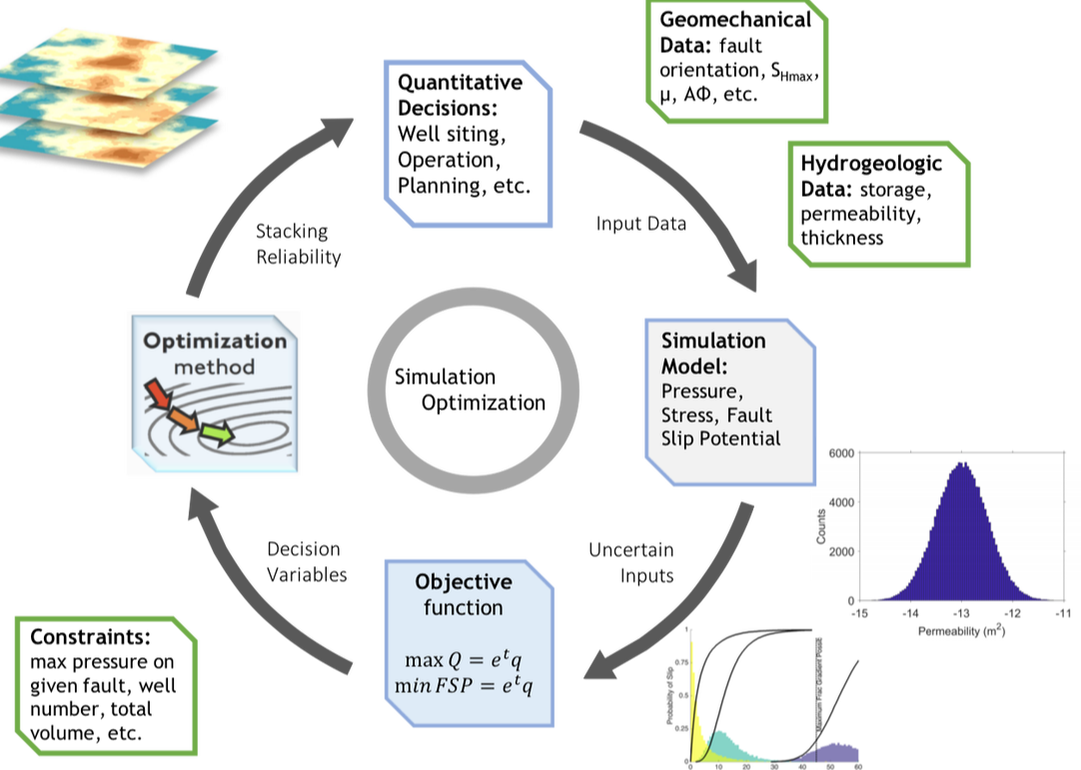Active Research:
|
Developing a better understanding of fluid-fault interaction along the San Andreas Fault System
Hydrologic loads can stimulate seismicity in the Earth's crust. We combined new geologic and paleoseismic data on the southern San Andreas fault in the Salton Trough with a fully coupled model of a poroelastic crust overlying a viscoelastic mantle. We found that hydrologic loads associated with ancient Lake Cahuilla increased Coulomb stresses on the fault by several hundred kPa and increased fault stressing rates by a factor of 2. References: Hill et al., (2023) |
|
|
Developing a better understanding of the physics of injection-induced seismicity
We built 3D numerical models that simulate pressure changes from injection wells in the Raton Basin of southern Colorado and northern New Mexico. References: Nakai, Weingarten et al. (2017); Keranen and Weingarten (2018); Scanlon, Weingarten et al. (2018) |
|
|
Forecasting Injection-Induced Seismicity
We use physics-based models combining pore pressure and statistical seismology to forecast injection-induced earthquakes in Oklahoma and Kansas through time. References: Langenbruch, Weingarten et al. (2018) |
Modeled fluid pressure increases (MPa/year) and earthquake occurrence from deep fluid injection in Oklahoma from 2005 - 2020. Note how areas of increased pressurization, denoted by warmer colors, are areas where seismicity is more likely to occur. |
|
Simulation-Optimization
We use computational simulation and optimization models that attempt aid quantitative decision-making in an inherently uncertain physical environment. We have applied this methodology to injection wells operating in Oklahoma. References: Hill, Weingarten et. al (2023), Weingarten, Gorelick and Zoback (2017) |
|
Groundwater Resources
California's Central Valley aquifer is among the most important regional aquifers in the United States. My group has multiple projects targeting Central Valley groundwater resources: (1) SGMA CVHM2 project -- a collaboration with the USGS's California Water Science Center (see Logan Platt & Ryne Adam's work), and (2) a base of freshwater/US drinking water project re-evaluating our groundwater resources with a large database of resistivity logs (see Emily Imperato's work). |
|
|
Dynamic Permeability
Permeability is not a static property of the geologic subsurface -- it is dynamic -- and has been shown to vary over time. One way in which permeability varies over time is from the stresses associated with large teleseismic or regional earthquakes. The waves from near- to far-field earthquakes have been shown to perturb hydrogeologic systems. We have studied these timing and magnitude of these perturbations in several systems. References: Weingarten and Ge (2014); Wang et al. (2017); Hung and Weingarten (2023) |
|

